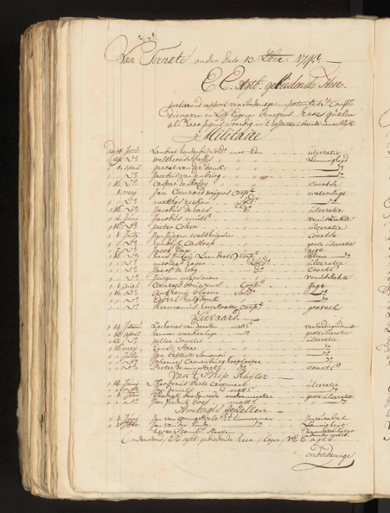
Healthcare and the Dutch East India Company: Two centuries of arrogance and challenges
The Dutch East India Company (VOC) took healthcare seriously, albeit mainly for business reasons. Former GP Ton Zwaard’s PhD research reveals that although healthcare in Asia was well organised, the VOC faced persistent problems for two centuries.
It was on board a replica of the VOC ship Amsterdam at the National Maritime Museum in 2002 that Ton Zwaard was struck by history. With so many people enduring gruelling months at sea, how was healthcare organised back then, he wondered. A Master’s in the History of Medicine later he started his PhD, initially alongside his work as a GP in Druten and his teaching at Radboud University.
While healthcare on VOC ships had been studied to some extent, little was known about medical care in Asia between 1602 and 1795. Determined to find out, Zwaard (now 70) spent countless hours combing through the National Archives in The Hague for information.
Training in hospitals
Zwaard was sometimes asked why a trading company like the VOC would concern itself with healthcare. ‘You can only make a profit if your workers are healthy’, he explains. And those workers faced a range of health problems: workplace injuries, mental illnesses, malaria, infectious diseases and the effects of wars, earthquakes and the arduous crossing from the Netherlands.
Patients were treated in hospitals, a rarity in the 17th and 18th centuries when surgeons and university-trained doctors in the Netherlands typically visited patients at home. Often working at trading posts, the VOC workers did not have a home, so hospitals were established to meet this need. ‘What I found surprising was that it wasn’t just northern European surgeons working in Asia’, says Zwaard. ‘Children of VOC staff – which could include the carpenter’s son – were trained in hospitals to become surgeons. As someone who has supervised many medical students, I was delighted to discover an entire training system there.’

Problems transporting medicines
Hoewel Despite healthcare being taken seriously, the often well-trained surgeons were not always a match for the conditions and diseases they faced. There were problems with medicines for two centuries. The surgeons practised northern European medicine and clung to the medicines they knew, which were shipped in bulk to Asia. However, the cargo often got wet during the long voyage, which meant the medicines proved spoiled on arrival. Two centuries passed and in all that time the VOC neither resolved the issue nor turned to indigenous medicines. ‘I think it was arrogance’, says Zwaard. ‘Surgeons were determined to rely on Western medicine.’
Modern healthcare
The surgeons were not always able to cure their patients. Zwaard points out that back then doctors knew nothing of viruses and bacteria but they had learned about and could treat different kinds of fever. ‘The fever was the disease’, he explains. ‘They did not investigate its root cause.’
Zwaard cautions against judging the past by today’s standards. In his conclusion, he offers a critique of modern healthcare. ‘Doctors today don’t know everything either. From my experience, I know there are many patients you want to help but you don’t know the cause of their symptoms. Take those with long Covid, chronic fatigue or certain mental disorders. I’d love to see how people view our healthcare 300 years from now.’
